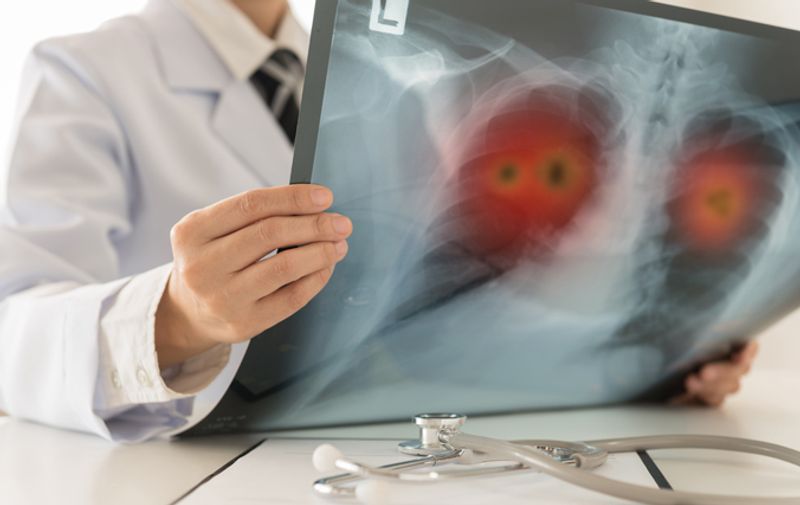Cemiplimab plus chemotherapy improves quality of life for patients with advanced NSCLC
Key takeaways:
- The combination improved pain symptom scores compared with chemotherapy alone.
- No statistically significant patient-reported outcome results favored chemotherapy alone.
The addition of cemiplimab to chemotherapy significantly improved pain symptoms and delayed time to definitive clinically meaningful deterioration of disease symptoms and functions among patients with advanced non-small cell lung cancer.
The findings, published in Cancer, specifically showed the combination of cemiplimab (Libtayo, Regeneron Pharmaceuticals) and chemotherapy — which has been shown to extend survival vs. chemotherapy alone for this patient population — significantly delayed time to dyspnea, nausea/vomiting and constipation.

Rationale and methodology
“Maintaining quality of life in patients with advanced NSCLC is important, especially when evaluating the efficacy of new combination therapy regimens with potential added toxicities,” Tamta Makharadze, MD, medical oncologist at LTD High Technology Hospital Medical Center in Batumi, Georgia, and colleagues wrote. “Recently published American Society of Clinical Oncology Value Framework in the advanced disease setting and the European Society for Medical Oncology Magnitude of Clinical Benefit Scale guidance highlighted the importance of a comprehensive assessment of the value of medicine that includes not only efficacy and safety, but also patient-reported outcomes.”
As Healio previously reported, results of the randomized, phase 3 EMPOWER-Lung 3 trial showed cemiplimab plus chemotherapy extended OS compared with chemotherapy alone for certain patients with advanced NSCLC.
In the current study, Makharadze and colleagues evaluated patient-reported outcomes of 466 patients (83.9% men; median age, 63 years) included in EMPOWER-Lung 3 who received cemiplimab plus chemotherapy (n = 312) or chemotherapy alone (n = 154).
They used the European Organization for Research and Treatment of Cancer Quality of Life‐Core 30 and Quality of Life‐Lung Cancer Module questionnaires to assess patient-reported outcomes at baseline, once every 3 weeks for the first six doses and then at the start of every three cycles.
Researchers additionally assessed time to definitive clinically meaningful deterioration for global health status/quality of life and all scales from the questionnaires. They used a stratified log‐rank test and proportional hazards model to compare between‐arm time to definitive clinically meaningful deterioration.
Findings
Results showed a statistically significant overall improvement in pain symptom scores from baseline (–4.98; 95% CI, –8.36 to –1.6) and a statistically significant delay in time to definitive clinically meaningful deterioration (HR = 0.39; 95% CI, 0.26-0.6) with cemiplimab plus chemotherapy.
Results also showed a significant overall improvement from baseline in global health status/quality of life for cemiplimab plus chemotherapy (HR = 1.69; 95% CI, 0.2-3.19) compared with nonsignificant overall change from baseline for placebo plus chemotherapy (HR = 1.08; 95% CI, –1.34 to 3.51).
Researchers observed no statistically significant patient-reported outcome results that favored chemotherapy alone.
Implications
“The findings support the concept that the superior efficacy and favorable safety profile of cemiplimab plus chemotherapy translate to better patient-reported outcomes compared with chemotherapy alone in patients with advanced non-small cell lung cancer,” Makharadze said in a press release.
References:
- Immunotherapy plus chemotherapy combination for advanced lung cancer not only prolongs life but also improves its quality (press release). Available at https://newsroom.wiley.com/press-releases/press-release-details/2023/Immunotherapy-plus-chemotherapy-combination-for-advanced-lung-cancer-not-only-prolongs-life-but-also-improves-its-quality/default.aspx. Published May 8, 2023. Accessed May 8, 2023.
- Makharadze T, et al. Cancer. 2023;doi:10.1002/cncr.34687.
